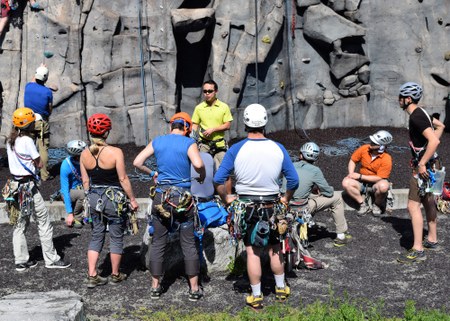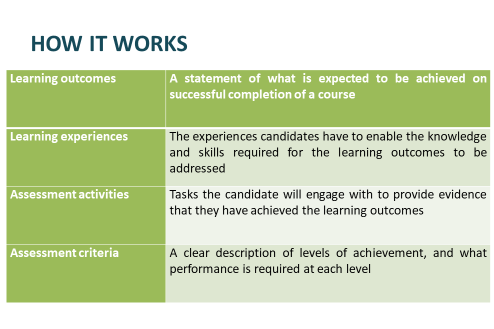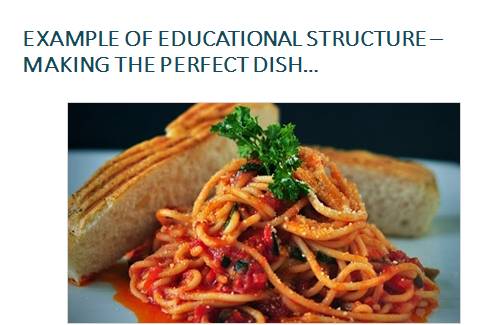
The Professional Ski Instructors of America and the Association of Snowboard Instructors (PSIA-AASI) is a national organization dedicated to teaching people how to ski and snowboard. I've had the opportunity to work closely with PSIA-AASI over the past several years to support and develop the Adaptive certification process here in the PNW, and in doing so, I’ve had the unique experience of writing learning outcomes through the lens of a volunteer.
Background
PSIA-AASI has a very similar structure to The Mountaineers. A national organization comprised of eight divisions, each division facilitates several different snowsports disciplines: Adaptive, Alpine, Cross Country, Snowboard, and Telemark. PSIA-AASI members have the opportunity to pursue education and certification in each of those disciplines, and while the certification itself is national - per the organization’s National Standards - the certification process is divisional. Sound familiar?
In an effort to create more consistency across the divisions, PSIA-AASI hosts an annual Fall Conference in advance of each winter season. Similar to our Activity Summits, Fall Conference is an opportunity for each discipline group to come together as a taskforce and discuss what is happening in their division, as well as organization-wide goals and initiatives. Over the past several years, PSIA-AASI has also made an effort to focus the groups’ discussions around consistency in exam outcomes. This process has been undertaken in collaboration with The Pennsylvania State University.

I currently serve as the Adaptive Lead for the Northwest Division, a volunteer role that is similar to our Activity Committee Chairs at The Mountaineers. As a member of the Adaptive Alpine Taskforce - which mirrors our Summit Groups - my role is to represent the Adaptive exams and educational opportunities that we offer in the Northwest Division in this national discussion, while also ensuring all of our programs are meeting the same National Standards.
PSIA-AASI is currently partnered with The Pennsylvania State University to focus on certification consistency, and with support from two of their professors, the primary goal at last year’s Fall Conference was to learn how to write a learning outcome. This was based on work previously undertaken by Pete Allison and Andrew Horrell at The University of Edinburgh, working with the British Association of Snowsport Instructors (BASI). Allison has now moved to The Pennsylvania State University and is working with his colleague Jen Emigh to review and develop the PSIA-AASI curriculum.
So what exactly is a learning outcome?
Learning outcomes are statements that indicate what students will know, value, or be able to do by the end of the course. They are also assessable, and written from the students’ perspective, which means they are focused on what students can expect to achieve if they successfully learn the course materials. Additionally, in order to be assessable, learning outcomes must specify things that can be observed.
One of our first tasks at Fall Conference was to write learning outcomes for one of our certification levels, concentrating on what students must absolutely be able to do for that level of certification – i.e., non negotiables. They gave us a simple formula, and process seemed easy.
How do you write a learning outcome?
- Every learning outcome follows a sentence stem:
On successful completion of this course, students will be able to … - After the stem, learning outcomes begin with an active verb or phrase that tells people what sort of public, observable activity will be expected of them:
Repeat, describe, organize, demonstrate, compare, defend, construct … - Finally, you have the object of that verb:
Concept/Idea, Skill, Attitude, Value, Belief
Over and over again, the example that we used was about making the “perfect plate of pasta.”

The example initially felt silly, but it was ultimately really straight-forward and helpful. In the pasta example, the learning outcome was: Upon completion of the cooking class, students will demonstrate how to cook and plate the “perfect plate of pasta.”
- Stem: "Upon completion of the cooking class …
- Verb: … demonstrate …
- Object: … cook and plate the “perfect plate of pasta.”
In our task force groups, we quickly discovered it was really hard to write clear, succinct learning outcome for our PSIA-AASI certification exams - much harder than we had expected. Each of the discipline task forces agreed the process of writing learning outcomes was really messy, but it was also really productive and clarifying. Once we were able to identify our learning outcomes, the competencies required for a snowsports instructor to pass the exam, we could flesh out the rest. Knowing your outcomes allows you to “begin with the end in mind,” as educator and author Stephen Covey would say.
Making the perfect plate of pasta ... metaphorically speaking
The full educational structure that we used at Fall Conference contained four components, and we continued to use the “perfect plate of pasta” to understand each piece of the full structure.
Learning Outcome
A statement of what is expected to be achieved on successful completion of a course.
- Upon completion of the cooking class, students will demonstrate how to cook and plate the “perfect plate of pasta”.
Learning Experiences
The experiences candidates have to enable the knowledge and skills required for the learning outcomes to be addressed.
- Students will spend 4 hours in a cooking class, under the instruction of a head chef learning the skills necessary to cook pasta to the perfect doneness.
- Students will cook 3 rounds of pasta during the class, each time testing their skills on length of time to cook past, temperature of the sauces, and their plating style.
Assessment Activity
Tasks the candidate will engage with to provide evidence that they have achieved the learning outcomes.
- Students will be given 3 attempts of 20 minutes each to cook and plate a pasta meal from start to finish.
Assessment Criteria
A clear description of levels of achievement, and what performance is required at each level.
- Students need to accomplish all 4 of these areas in 2 out of the 3 rounds of assessment:
- The pasta will be al dente.
- The sauce will be between the temperatures of 165-170 F.
- The mound of pasta on the plate will be in a pyramid formation.
- There will be a garnish and a sprinkle of parmesan cheese.
As we moved through the process of writing learning outcomes, learning experiences, assessment activities, and assessment criteria, we struggled to be specific - but we also struggled to clearly define and verbalize our parameters for success and failure.
The result, however, is that the process ultimately forced our group to be more transparent about expectations. This process can then be used as a basis for quality assurance, and it helps to ensure that there is consistency between candidates, between exams and examiners, and between divisions over time. Learning outcomes, and this full educational structure, gave us a clearer picture of what exactly a snowsports instructor should be able to do at each step of certification.
How does this apply to The Mountaineers?
Throughout this whole process with my Adaptive Alpine Taskforce, I couldn’t stop thinking about how we could apply some of these same principles to our courses at The Mountaineers. A focus on consistent outcomes doesn’t necessarily dictate consistent processes - the system gives divisions or branches the latitude to vary their learning experiences and assessment activities - but the learning outcomes and assessment criteria were the same across the board. This means that the individuals holding certifications or “badges” can move more freely between divisions or branches, without having their capacities questioned.
One example of this process at The Mountaineers is the Progressive Climbing Education (PCE) Curriculum Committee, which recently conducted similar work to develop learning outcomes for our Basic Climbing Course. The goal of these learning outcomes is the help our branches move closer to an aligned curriculum - even if they ultimately deliver the curriculum a bit differently - based on their branch size, course capacity, and course facilities.
The process of writing learning outcomes isn’t easy, and it certainly isn’t quick. For my group with PSIA-AASI, last year’s Fall Conference was just the beginning of an ongoing conversation to establish this structure for each of our exams. Here at The Mountaineers, as we strive to be innovative leaders in outdoor education, I think that we should consider following a similar process for each of our courses. So grab a plate of pasta, and let’s dive in! Just don’t forget your napkin, as it’s going to get messy.
 Sara Ramsay
Sara Ramsay